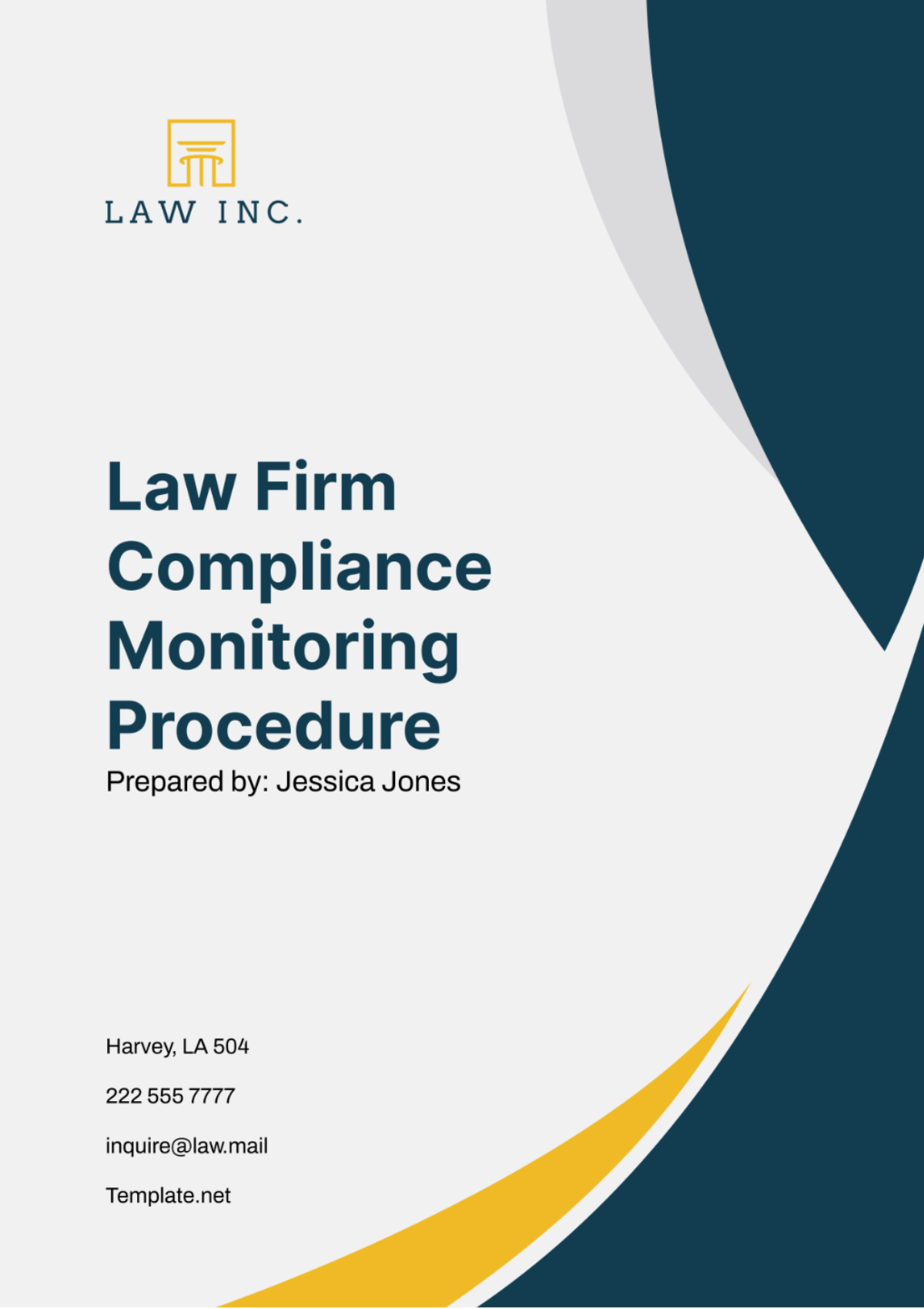Free Law Firm Compliance Monitoring Procedure
Utilize the Law Firm Compliance Monitoring Procedure Template from Template.net for an efficient compliance solution. This editable and customizable template ensures adherence to regulatory standards and ethical practices. With an intuitive AI Editor Tool, tailor the procedure to your firm's specific needs. Safeguard your legal practice and reputation with this comprehensive compliance framework.






























